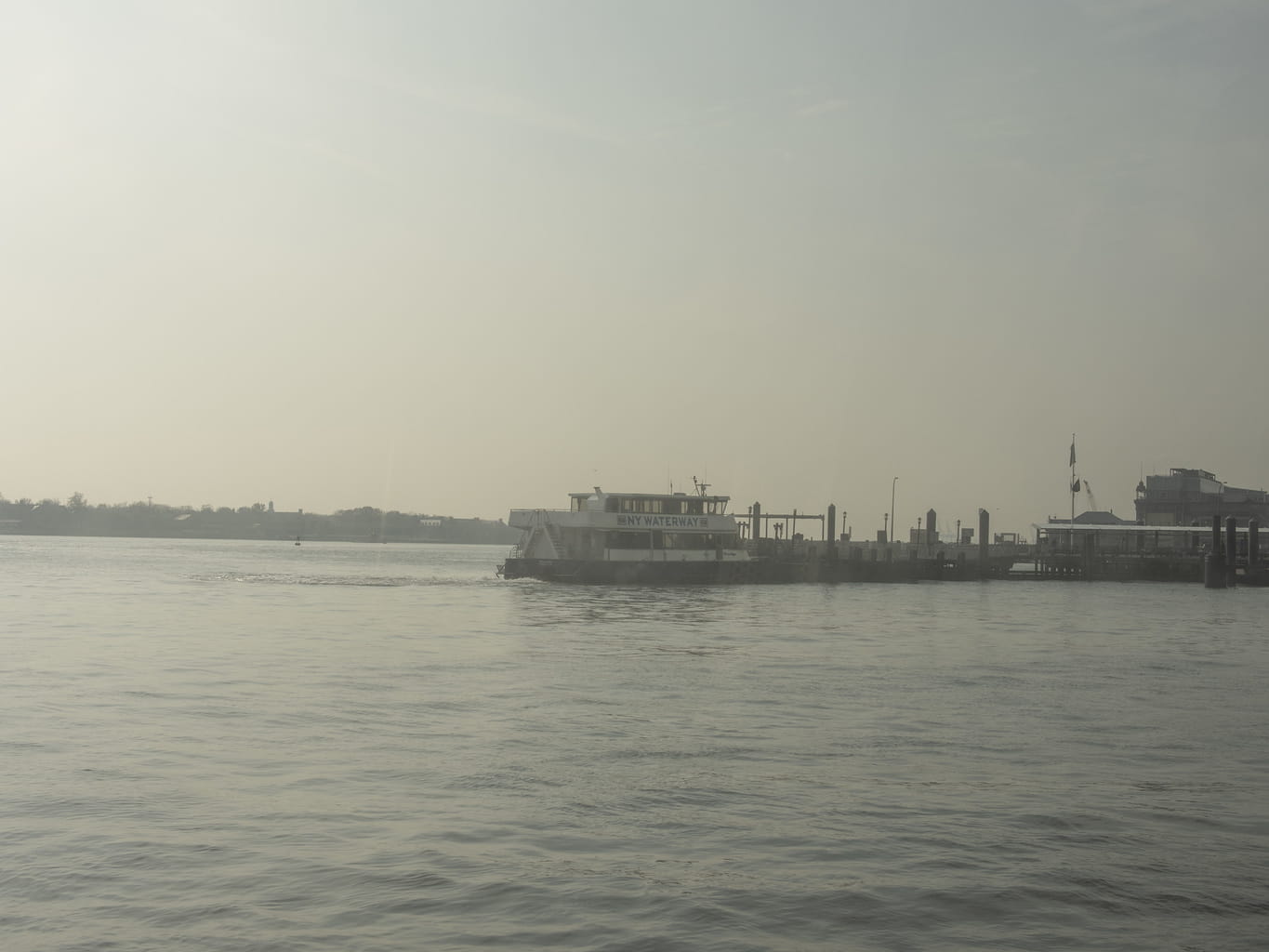Vanishing Points by Darran Anderson
In early 1717, an immense snowstorm engulfed the East Coast of what is now the United States of America. It was so deep in places that it buried entire houses and almost wiped out the deer population of the region. New York City struggled under blankets of snow as well. Just over a century after the first Jacobean colonies had taken root in the region, it must have felt like it was all vanishing. During the same year as what would be called the Great Snow, a word entered the English lexicon. It had roots in both Latin and French, tracing back to vanus, meaning void, vacant, empty. To an eighteenth-century New York scribe, “evanescent” was a new way to write “disappearing,” as the world through the window was swallowed in a whiteout.


Three centuries later, the photographer Patrick O’Hare walks the streets of New York’s boroughs, places that may have been vaguely recognizable to inhabitants of past centuries, but which are filled with things they could scarcely imagine. For all the advances made, O’Hare identifies again and again a new sense of urban evanescence. It is not subzero blizzards that now threaten to “vanish” the streets of Long Island City, Queens, and Brooklyn so much as neglect, redundancy, the passage of time, the passage of power, the passage of meaning.
The photographer’s subjects, and the way he frames them, are so subtle, and deep, it’s easy to miss them. That is the point. He is showing us what is already almost invisible, yet these are sights we see every day in our own evanescent cities.


In O’Hare’s first image, we see the industrial city seeming to fade away through dust or snow or some miasma. Yet the photographer enters it and finds details of the city aplenty—its vocabulary and its grammar, its signs and its fossils. In Paris Noir: The Secret History of a City, Jacques Yonnet writes, “An age-old city is like a pond. With its colours and reflections. Its chills and murk. Its ferment, its sorcery, its hidden life.” Perhaps Manhattan and the outer boroughs of New York City are not age-old by European standards, but they certainly have these qualities and can certainly be “read” visually.
What are the elements that O’Hare finds? What do they mean or suggest? Perhaps they are the defunct punctuation marks of the city’s aesthetic language: the pilcrows, the manicules, the virgules. Perhaps they are the parts we see, like the tip of the iceberg above the ocean’s surface, of the systems that allow urban settlements to run. If, as Le Corbusier put it, “a house is a machine for living in,” then the city is a series of networks of machines. These are akin to respiratory, digestive, and nervous systems, only mechanical. The working components of communications, transport, and utilities go well hidden in most cities, and even when they are public, they largely seem inconspicuous to the human eye. Yet there are other ways of seeing the city.


In the Japan of 1972, Genpei Akasegawa began noticing these urban relics that had lost their functions but persisted, often dislocated yet still preserved. He baptized them “Thomassons” after a baseball player, Gary Thomasson, who had moved from the US major leagues to play for the Yomiuri Giants to great fanfare and expense, but performed so disappointingly he ended up on the bench. In Akasegawa’s eyes, as he photographed and collected examples throughout the urban environment, Thomassons were intriguing features that had outlived their usefulness but raised many questions.


What were they? Perhaps they were found art, a concept that had existed since Duchamp exhibited a urinal in a gallery and proposed that art was what artists defined and framed as art. Perhaps Thomassons were playful relics, in the way a child can make a toy out of broken tools. Perhaps they were just junk, except just is a big word. Junk, after all, originally referred to pieces of rope and discarded objects from ships that had sailed on perilous voyages. Whatever these features meant, they were cast aside from their original functions in the urban environment, but remained irrevocably attached to it.



O’Hare notices these components and reframes them not as an artist might, with pomp and ceremony, but with the acute eye of the photographer. It’s tempting to call these spaces liminal, with the meaning it has acquired among psychogeographers: desolate retail parks at the edges of towns, Ballardian flyovers, derelict factories, faceless warehouses, godforsaken shopping malls. Yet the meaning of liminal is a gateway. Where is this a gateway to? The countryside seems a distant rumor. Perhaps limbo then, but it’s already purgatorial here. The cityscape seems to belong to the “junkspace” of Koolhaas or the “non-place” of Augé, spaces that could belong anywhere and thus feel like nowhere. Places that have been exempted from, or exorcised of, meaning, attachment, heritage, belonging. Yet those terms do not suffice either and O’Hare’s photographs, even when they glide across the surfaces, probe deeper than that.
Read the rest of Darran Anderson's Essay in Patrick O'Hare's, Evanescent Cities.


